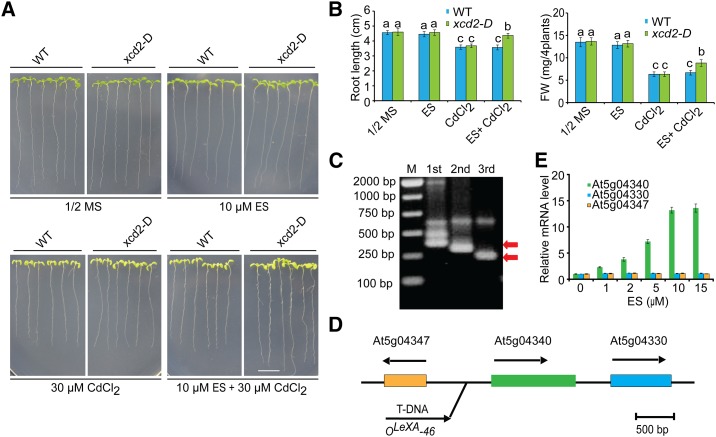Figure 1.
Cloning of the XCD2 gene. A, Phenotypes of the xcd2-D mutant under Cd stress. Three-day-old seedlings grown on 1/2 MS medium were transferred to 1/2 MS medium with or without 30 μm CdCl2 and 10 μm estradiol (ES). Photographs were taken 11 d after transfer. Bar = 1 cm. B, Root length and fresh weight of the wild type and xcd2-D in A. Three independent experiments were done with similar results, each with three biological repeats. Four plants per genotype from one plate were measured for each repeat. Data are presented as means ± se, n = 3. Statistical significance was determined by ANOVA in combination with posthoc tests; significant differences (P ≤ 0.05) are indicated by different lowercase letters. B, TAIL-PCR analysis of the T-DNA insertional site in the xcd2-D mutant. Three rounds of TAIL-PCR were carried out using nested primers. These holes showed DNA markers, 1st, 2nd, and 3rd round products from left to right, respectively. DNA bands marked with red arrows were recycled for DNA sequencing. C, A schematic of the genomic region flanking the T-DNA insertion site in the xcd2-D mutant. Arrows indicate the orientation of transcription. D, qRT-PCR analysis of estradiol-induced transcription levels of neighboring genes including At5g04330, At5g04340 (XCD2), and At5g04347 in 2-week-old seedlings. ACTIN11 was used as the internal control. Data are presented as means ± se of three replicate experiments.

